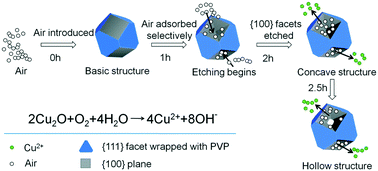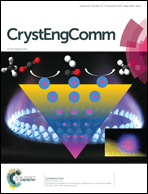Concave structure of Cu2O truncated microcubes: PVP assisted {100} facet etching and improved facet-dependent photocatalytic properties†
Abstract
In this work, a concave structure of Cu2O truncated microcubes with {100} facet erosion has been successfully synthesized by a facile top-down etching method. Air and PVP were employed as an etchant and a shape controller agent, respectively. For the facet-selective capping of PVP on Cu2O {111} planes, the traditional relatively low energy {100} facets of Cu2O truncated microcubes would be selectively etched along their [100] zone axis in a top-down manner. The {100} facet etched Cu2O concave truncated microcubes exhibited highly improved photocatalytic activities (2.15 and 1.21 times, respectively) compared to that of the basic structure and the {111} facet etched samples on the degradation of Congo red (CR), displaying distinct facet-dependent photocatalytic characteristics, excellent stability and reusability. This work not only builds an efficient photocatalyst, but also provides a novel method to fabricate a variety of architectures with low energy facets etched and highly active crystal planes exposed, which is extremely important for the improvement of catalytic activities.



 Please wait while we load your content...
Please wait while we load your content...